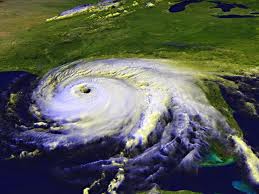
Evidence provided by the United Nations Framework Convention on Climate Change (UNFCCC) supports that some of the changes currently taking place within the climate system do not fit into natural patterns, and can be attributed to the human emissions of different chemical compounds to the atmosphere. In spite of the latter, there are many natural long cycle variations (thousands or million years) in the global climate system that the scientific community still is not entirely aware or remain poorly understood (i.e. Solar activity variability impacts over the global climate system). Hence, climate variability and change have an astounding grade of complexity, which is yet to be fully comprehended. In the above described scenario, talking about Climate change in general can give us a clear idea about the level of uncertainty to attempt to avert climate disasters in the long run. Therefore, adaptation can be seen as a natural option in this changing climate.
In the short term (days/weeks), the use of modern atmospheric science numerical models can foresee and prevent some threats, such as:
However, the future is just a simple scenario based on potential changes. Consequently, we are unfortunately unable to  mitigate future climate changes effectively.
mitigate future climate changes effectively.
To put this issue on perspective, the point where any society could respond effectively to the stress induced by climate change and natural disasters differs greatly. This is particularly complex, because societies exposed to stress have a tendency towards conflict. Therefore, it is necessary to understand the relationship between the conflicting elements. Given that the climate system will inevitably change in the future because it has changed in many ways in the past centuries-the Earth has gone through cold and warm periods even before human influence-to wisely address Climate change, environmental impacts and natural disasters, these must be handled through adaptive measures.
A climate stress event experienced by a given society will unavoidably trigger a conflictive relation among the population, if there is a scarcity of basic goods (i.e. safe drinking water, food, energy, etc.). If we combine global population growth with the decline of available resources due to climate and political stress, the consequence will be that the advantaged groups within a society will shift the distribution of resources distribution to their own benefit. Consequently, this unequal resource distribution will result in serious repercussions for the weaker more vulnerable communities. We will see migration to regions with no urban planning (i.e. over 75% of LAC’s population live in urban conglomerates) and an increased local environmental instability (i.e. population living on steep upland slopes, areas at risk of desertification or flooding, etc.) resulting in the expansion and preservation of almost pandemic, chronically poor segments of society.

The trend induced by climate change and climate variability, aggravated by anthropogenic factors such as use of marginal lands, deforestation, changes in land use, population and economic conditions, brings together the perfect ingredients for a “disaster”. Today, modern society is becoming more vulnerable to extreme climate events. Adaptive measures, particularly coupled with solidarity, must be implemented judiciously by the existing advantaged groups within our global society to protect the most disadvantaged. Otherwise, a “humanitarian disaster” rather than a “climate disaster” will occur. Where do we go from here? Nobody knows
.JPG)